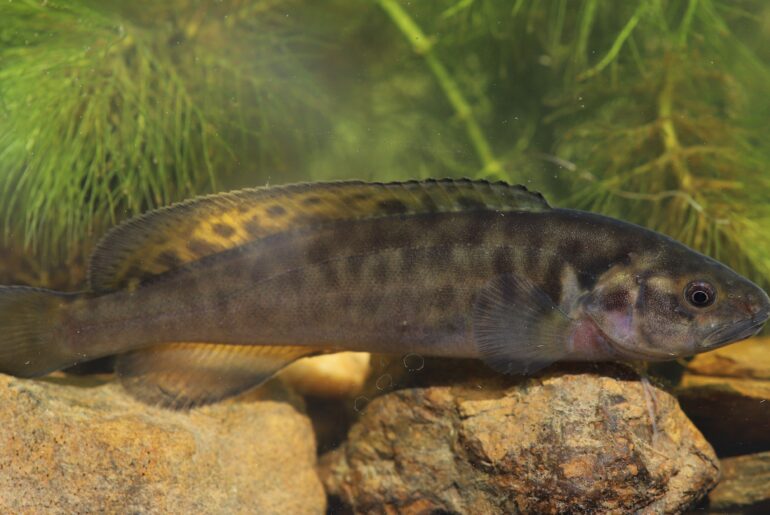Fishways make it easy for all fish – native and introduced – to move upstream. Carp (Cyprinus carpio) are highly migratory and often dominate the species using fishways. A carp separation cage (CSC) is a specially designed trap, usually installed on infrastructure such as a fishway, that takes advantage of the jumping behaviour of migrating carp by drafting them into a holding cage for later removal. Most native fish do not jump like Carp, so progress through the fishway and continue swimming upstream.
This project designed a low cost CSC to automatically separate adult carp from native fish. The season, time(s) of day, environmental cues and biomass (amount) of adult and juvenile carp migrating in fishways was also examined to better target the use of the technology.
Findings:
The prototype carp separation cage demonstrated that large numbers of carp can be removed with minimal catch of native fish. However, the need to manually release any trapped native fish limited the application of the technology, especially in remote areas. Subsequent versions of the initial design resulted in several improvements, including:
- being able to operate on the exit of any fishway type (Denil, vertical-slot, lock);
- an increase in the biomass of Carp and native fishes that can be held;
- holding trapped fish in lower water velocity conditions;
- exiting native fishes into the weir pool rather than into the fishway;
- adapting the cage so that it is transferable among exits or different fishways; and
- more efficiently accessing and removing Carp.
A commercial trial of the CSC in the fishway at Lock 1 (Blanchetown) has been underway for some years. Between 2007-2011, 300 tonnes of Carp were harvested.
Implications for native fish:
CSCs on fishways provide opportunities to remove Carp only migrating upstream. Ideally, the CSC need to be targeted to periods of strong carp movement. Spring is a critical time for native fish movement so using the cages outside the spring period will maximise catches of carp, but minimise disruption to movements of native fishes.
It is likely that CSCs will increasingly be used as a way of reducing carp numbers in the MDB. For example, the CSC has been modified to suit Carp separation at wetlands (see MD746). It is important, however, to be aware that there are maintenance , carp disposal, and impact on native fishes issues to be addressed. For both monitoring and carp removal purposes it is essential that trap construction, fishway trapping and data collection are standardised across the many locks and weirs of the Murray River. In addition, the applicability of the CSC method for the northern Basin has yet to be determined as there are a number of native fishes that also jump e.g. Spangled perch.
Read more here: Carp separation cages



